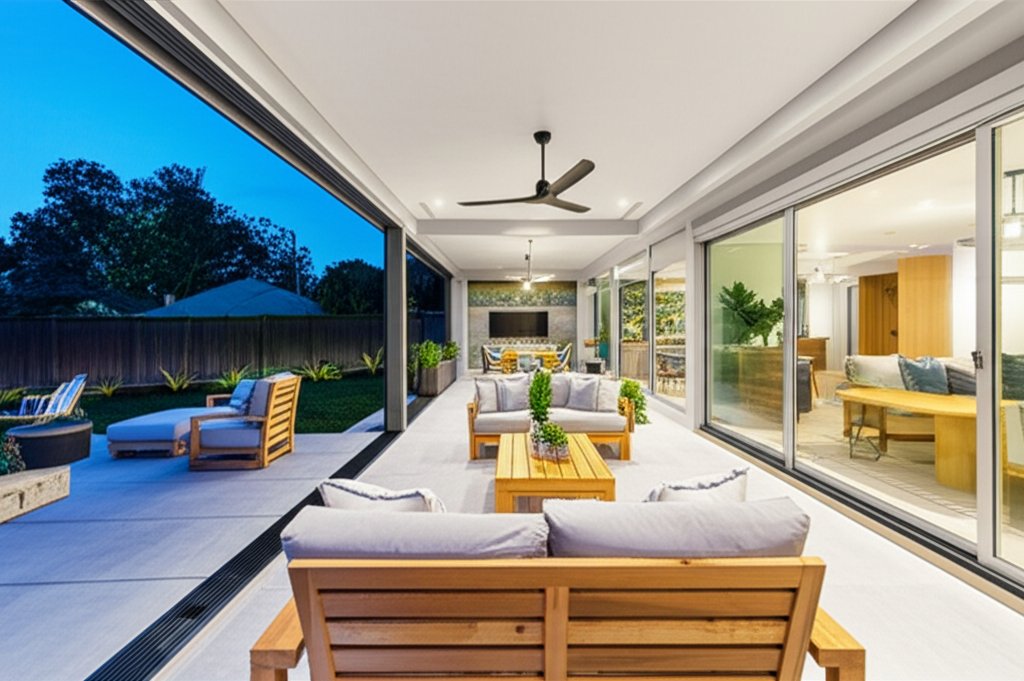Turn Your Backyard Into a Luxurious Indoor-Quality Living Space
Why Outdoor Rooms Are Redefining Home Design
If you have noticed stunning outdoor spaces on social media that rival indoor rooms, you are not alone. A surge in home-focused living, accelerated by the pandemic, has pushed designers to merge indoor comfort with outdoor freedom. According to a 2024 survey by the National Association of Home Builders, 71 percent of homeowners rank outdoor rooms as a top renovation goal, and a well-designed space can increase resale value by up to 12 percent. These areas enhance daily life while offering a solid return on investment.
This guide provides practical, step-by-step advice to transform your backyard into a seamless extension of your home. You will discover key design principles, current trends for 2024 and 2025, and actionable plans to start immediately.
Core Principles for Seamless Indoor-Outdoor Design
Creating a cohesive transition between your home and backyard means ensuring movement feels effortless, visuals align, and both spaces function as one. Focus on three foundational elements to achieve this harmony. First, prioritize level and flow by matching floor heights or using gentle slopes to eliminate barriers. Second, maintain material harmony with consistent or complementary flooring and finishes across both areas.
Third, establish a visual connection using large sliding doors, bi-fold panels, or retractable walls to keep sightlines open and invite natural light. These elements trick the mind into perceiving a single, unified environment.
Essential Components for Your Outdoor Room
Flooring Continuity
Choose materials like porcelain tile, sealed concrete, or engineered outdoor wood that echo your indoor finishes. Costs typically range from 6 to 20 dollars per square foot, excluding installation, but the investment ensures a polished look.
Roof and Shade Solutions
Options vary from basic pergolas, priced between 1,500 and 5,000 dollars, to advanced motorized louvered roofs costing 8,000 to 20,000 dollars. Assess your local weather to determine the level of protection needed.
Furniture Proportions
Measure your indoor furniture and select outdoor pieces with similar scale, allowing 30 to 36 inches for easy movement around seating. This balance prevents a cluttered or disjointed feel.
Layered Lighting
Incorporate ambient, task, and accent lighting with smart controls for versatility. Budget between 800 and 2,500 dollars for a basic setup, depending on fixtures and electrical needs.
Trending Ideas for 2024 and 2025
- Sustainable Materials: Opt for reclaimed wood, composite decking, or recycled pavers to minimize environmental impact while maintaining durability.
- Smart Technology: Integrate Wi-Fi-enabled LED strips and voice-controlled climate systems to manage lighting, heating, or misting remotely.
- Biophilic Features: Add vertical gardens or native plantings for improved air quality and a serene atmosphere, with small living wall systems starting at 500 dollars.
- Multi-Season Use: Invest in retractable roofs and weather-rated furniture, priced from 600 to 4,000 dollars, to extend usability year-round.
- Minimalist Workspaces: Create compact outdoor studios with shade and sound buffering for focused work, budgeting 2,500 to 8,000 dollars.
Step-by-Step Plan to Build Your Outdoor Room
- Sketch a rough layout using a free tool like SketchUp or simple graph paper to visualize the space.
- Analyze sun and wind patterns over a week with apps like SunCalc and local weather data to inform shade and windbreak placement.
- Select flooring that mirrors indoor materials, ordering samples to test durability outdoors.
- Choose a roof or shade system, gathering at least three contractor quotes for comparison.
- Purchase modular, weather-resistant furniture, anticipating 1 to 2 weeks for delivery.
- Install smart lighting connected to a central hub, consulting an electrician for complex wiring.
- Develop a planting plan with native species, referencing the USDA Plant Hardiness Map for guidance.
- Incorporate a water feature, ensuring proper drainage, and hire a plumber for larger setups.
- Style the area with seasonal rugs and cushions for a layered, adaptable aesthetic.
- Establish a maintenance schedule for cleaning, pruning, and technology updates.
Budgeting and Phasing Your Project
Divide your project into manageable phases to create a functional space early while spreading costs. Allocate 50 percent of your budget, roughly 5,000 to 20,000 dollars, to core elements like flooring, basic roofing, and essential furniture. Reserve 20 percent each for technology and landscaping, and 10 percent for finishing touches like decor. This approach keeps the project financially sustainable.
Sustaining Your Outdoor Oasis
Regular upkeep ensures longevity of your investment. Sweep and mop floors monthly with a pH-neutral cleaner, resealing stone surfaces every two to three years. Protect furniture cushions with covers during harsh weather, and mulch plants to retain moisture while pruning as needed. Update tech firmware seasonally to maintain performance.
Start Small, Dream Big
Begin with a single impactful change, such as installing a bi-fold door or string lights, to improve flow instantly. Set a realistic budget, prioritize your must-haves, and phase the work over time. For expert guidance or quality materials, explore local resources to bring your vision to life with confidence.
